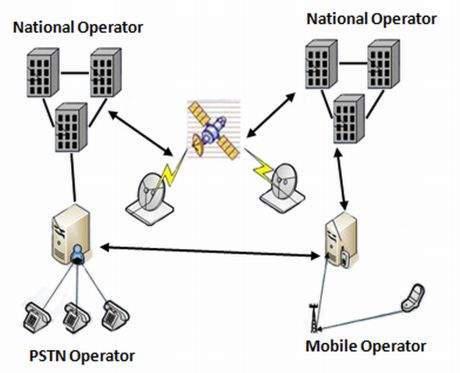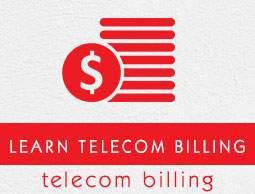Telecom Interconnect Billing
Interconnect is the process of handling calls for other service providers. This allows the customers of one service provider to communicate with the customers of another service provider.
If two operators A and B are not interconnect partners, then it would not be possible for a customer of Operator A to communicate with a customer of operator B.

Usually, operators keep their agreements with each other to allow their customers to communicate with each other. This gives good business opportunity to all the operators engaged in interconnection. Any interconnection point at which the parties agree to connect their respective Networks is called "Interconnection Point".
Examples of interconnection include −
Two adjacent, non-competing telephone networks interconnect so that subscribers on one network can call those on the other.
Long-distance carriers obtain access to the facilities of a local service provider and compete against that provider in providing long-distance services to a common customer base.
Traditional wireline telephone and new wireless mobile carriers interconnect so that subscribers of the traditional phone service can call wireless subscribers, and vice versa.
New competitive local telephone carriers interconnect with the incumbent carrier so that they can attract subscribers in the common service territory and enable those subscribers to call subscribers on the incumbent's network.
Customers of the incumbent telephone carrier make calls to their dial-up Internet Service Provider, which in turn is a customer of a competing local carrier.
Interconnect Invoicing
This is process of the production of invoices to send to an interconnect partner relating to incoming interconnect call detail records (CDR).
Interconnect Billing concerned with calculating the amounts to be paid to and received from each of the network operators that our infrastructure connects in order for the successful call origination and termination. The CDR for interconnecting calls keep the call routing information as a group of valid values to identify the carrier and the country details.
Note that the set of Interconnect CDRs includes the following details −
CDRs are those billable to retail and wholesale customers. It is revenue for the telecom provider. It is also referred as local billing.
CDRs that are only billable for Interconnect providers. Eg: Outgoing calls, Outgoing Transit calls, Incoming calls, etc. The Outgoing calls are the expense and Incoming calls are the revenue for the Telecom Provider.
Interconnect Billing systems do pricing of all incoming and outgoing interconnect CDRs. Usually, an interconnect price is determined for both incoming and outgoing interconnect CDRs on the basis of the incoming or outgoing trunk interconnect route that carries the call. Most commonly, a trunk ID represents a unique interconnect partner in the interconnect Billing System.
Settlement Process
The Settlement Process will be used to settle the Network Operator/Carrier involved in carrying calls from Interconnect Owner to Other Network Operator destination or vice versa.
The Process will bring the Outgoing (Expense to Interconnect Owner) and Incoming (Revenue to Interconnect Owner) traffic for the settlement.
Settlement can be done on monthly or bi-weekly basis using manual or automated process. It depends on billing system to billing system how it supports partner's settlement.
Netting Process
Netting used to perform after the settlement is completed for the agreed Provider/Carrier. The netting is done by multiple settlement period for the multiple services, which it supports the same currency in Operator level.
There are two types of netting methods −
AFTER − After for Netting of Operator's Interconnecting cost after subtracting the amount between operator and Provider/Carrier
BEFORE − Before for Netting of Operator's Interconnecting cost without any subtracting of the amount between operator and Provider/Carrier.
Reconciliation Process
This is the process of the reconciliation of invoices coming from an interconnect partner which relate to outgoing CDRs.
Every month interconnect partners exchange their CDRs for reconciliation purpose. It is very common to have discrepancies in the CDRs provided by the two partners.
Billing Systems provide reports facilitating reconciliation of incoming and outgoing interconnect CDRs. These reports keep parameters such as call type, destination, cost band, and duration so that these CDRs can be used by both operators to match those parameters and identify missing CDRs.
There may be a situation, when some CDRs are found missing at either of the operators' side. After doing required reconciliation if matter does not settle, then various negotiations happen between the partners, and finally, matter is settled by paying some nominal amount to the impacted interconnect partner.
Interconnect Call Scenarios
There could be various interconnect call scenarios depending on type of agreement between different operators. Let us try to cover a few most commonly used −
Operator A's customer makes national call to Operator B's customer. In this case operator A will pay some amount to operator B.
Operator A's customer makes international call through Operator B, because operator A does not have direct agreement with any international operator. In this case, operator A will pay some amount to operator B and operator B will take care of settling down international operator.
Operator A's customer makes international call directly using an international operator. In this case, operator A will pay some amount to international operator directly.
All the above calls could be voice, SMS, MMS, and data, etc.
Interconnection Agreements
To have a successful interconnection, the following issues should be dealt with in the interconnection agreement or by rule or order from the regulatory authority −
Prices and adjustments − This includes the initial level of interconnection charges, a definition of the currency in which interconnection charges are to be paid and how prices will adjust over the term of the agreement to account for exchange rate changes and inflation.
Points of interconnection − The physical locations, where interconnection will take place and the technical standards to be employed in the interconnection are defined.
Transport and traffic routing − Some definition must be made for how calls will be routed and what will be transported to deliver the calls.
Quality of service − Quality standards are defined, particularly for time to provision circuits and for call blocking levels, and remedies are defined for when those standards are not met.
Billing and collection − When and how to collect traffic data, when and how to exchange bills, and when and how to make payment should be specified.
Reconciliation − A process for reconciling traffic data and for making inquiries to the other party and for handling claims also should be incorporated. A procedure for resolving discrepancies is useful which often involves seeking recourse to arbitration, the regulator, or to the courts.
Numbering Plan − Access of each operator to the country's numbering plan and numbering resources must be defined.
Traffic Load − Capacity to deliver and receive the traffic that flows between the interconnecting networks should be discussed and documented.
Agreements Types
Operators can have different types of agreements to exchange their traffic. Most commonly used agreements are listed below −
Bi-Lateral Agreement − Under this agreement, each party agrees to exchange digital communications traffic with the other party over its Network at the Interconnection Points and/or in one or more direct interconnections. Payment settlement among different partners happens on monthly or bi-monthly basis as per the agreement. As per this agreement, both the operators can originate and terminate their calls in each other's network.
Uni-Lateral Agreement − Under this agreement, one party sends his traffic to other party's Network at the Interconnection and does not take traffic back from other party. Payment settlement among different partners happens on monthly or bi-monthly basis as per the agreement.



